Author: Frédéric Silvestre
If we hear the name of Ansel Adams, several black and white images of Yosemite landscape come in our mind. Half Dome, El Capitan, Cathedral Rocks, the famous sight of Yosemite valley from Tunnel view, or the Jeffrey pine at Sentinel Dome photographed in 1940. If this tree perished from drought in the late 1970s, the iconic photography remains. So as the legacy of Ansel Adams that continues to be exhibited all over the world. But why was he one of the most famous photographers of the 20th century ? One of the reasons is that he was a pioneer using photography to help to preserve the natural environment of Western USA. He spent years to photograph famous areas like Western deserts and above all Yosemite wilderness. He’s been inspiring many photographers around the world. Some of them created The International League of Conservation Photographers, founded in 2005, well after the death of Ansel Adams in 1984. This association aims to « support environmental and cultural conservation through ethical photography and filmmaking ». Ansel Adams was not the only one, nor the first to use photography as a tool to preserve wildlife, but he’s the most famous. Another important preservationist photographer was Carleton E. Watkins (1829–1916). His photographs of the Yosemite valley influenced the US Congress’ decision to preserve it as a National Park.
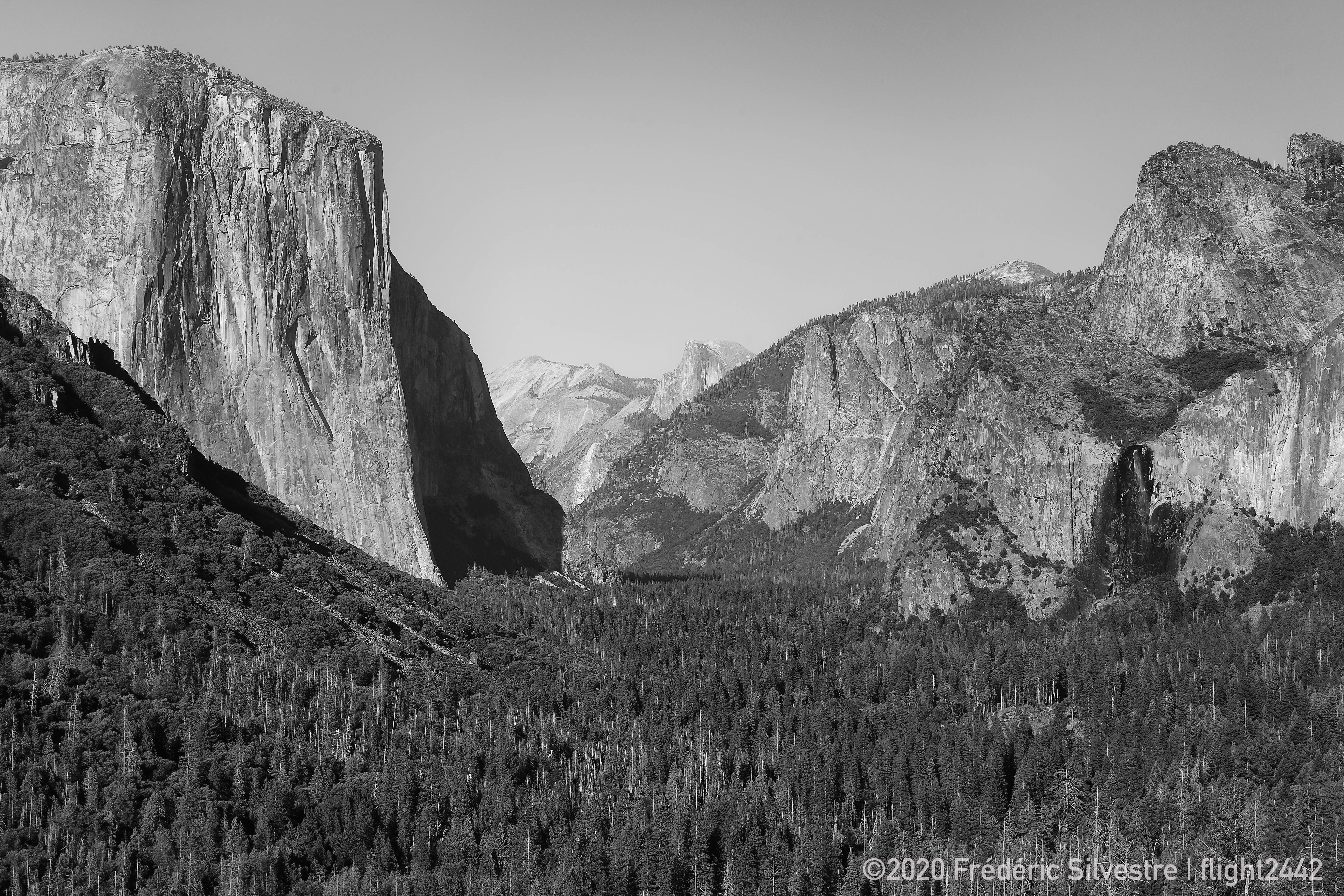
Famous landscape of Yosemite Valley from tunnel view
Nowadays, thanks to the amazing photography gear that is accessible to average people, we can hike through deserts, paddle on the ocean, or climb up to mountains with a good quality camera that will immortalise the moments we spent in the wild. But conservation photography goes a step further in order to reach environmental conservation, wildlife conservation, habitat conservation or cultural conservation by expanding public awareness of issues and stimulating remedial action. In other words, rather than keeping your images as a secret treasure, the almost unlimited platforms (digital or not) to share your work can help the global conservation effort by raising awareness of the fragility of a tiny lizard species or the breathtaking of a sunset landscape in a lake of your neighborhood. This kind of photography helps a lot conservationists because it makes people better know and appreciate nature, which is a prerequisite to support nature conservation. The famous quote “In the end we will conserve only what we love; we will love only what we understand; and we will understand only what we are taught” (Baba Dioum, 1968), perfectly summarizes the spirit of conservation photography.
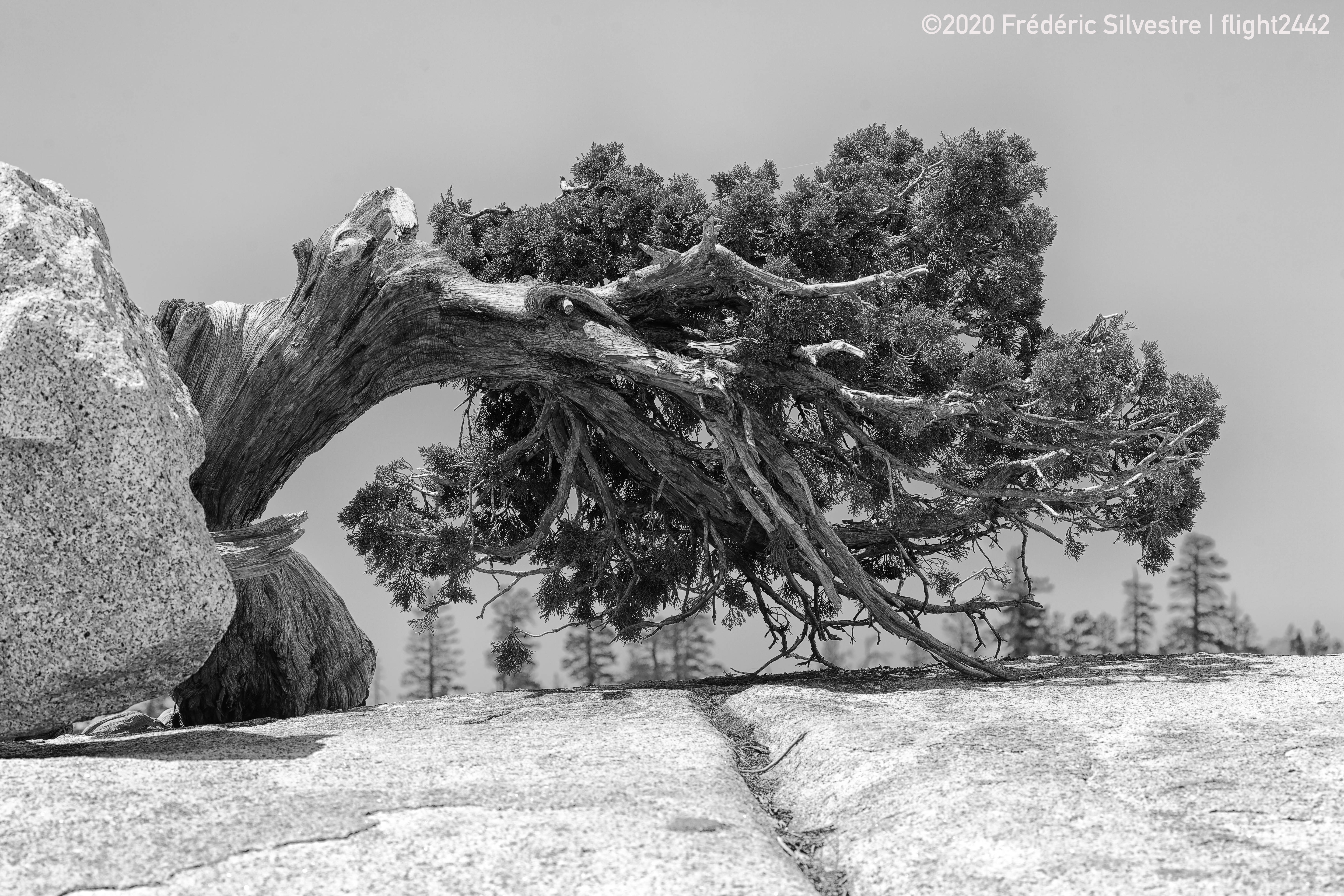
Iconic Jeffrey pine at sentinel dome
Ansel Adams pictures present strong contrast and are highly dramatic as he mastered the perspective, the light, the shadows and even the clouds in the sky. My goal here was not to try to copy his work, but to be inspired by its heritage while visiting Yosemite National Park during 2020 summer. This period was great to visit Yosemite as it is usually crowded during summer months. But this year, the park access was limited because of the coronavirus pandemic and we had more room to walk peacefully and to enjoy the moment. They are all in black and white with a strong contrast. Unfortunately, when you’re practicing nature photography while you’re traveling, you have limited amount of time at each location (and even less if you’re traveling with kids). You can not afford to come back several times at the same place to capture the perfect light. For example, I could not include clouds in my frame, just because there was no cloud at the moment. This limitation also concerns the time of the day when you’re at the right place. It does not necessarily fit the good light. Using black and white can be a good solution when you aim to take dramatic landscape photography in the middle of the day, with a hard sun. I definitely look forward to come back at Yosemite, even if it already was my fourth visit of this splendid National Park.
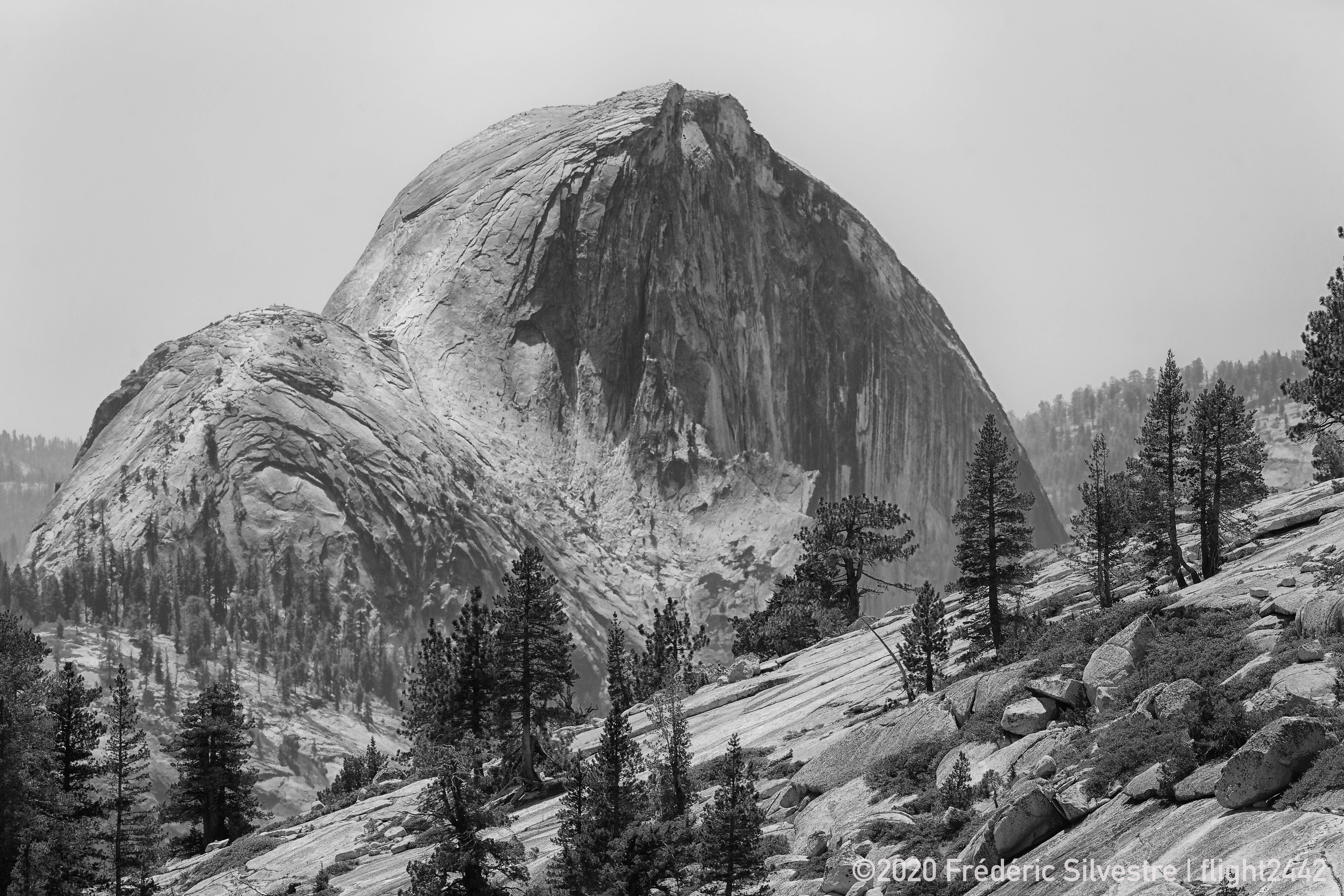
Half dome view from Olmsted point
To go further:
- Vimeo video: What is conservation photography ?
- International League of Conservation Photographers
- Wikipedia: Ansel Adams
- The Ansel Adams Gallery
- nps.gov: Yosemite National Park

El Capitan and Cathedral Rocks from Yosemite Valley view

Cathedral Rocks from Yosemite Valley view

Tenaya Lake on Tioga road, Eastern Yosemite
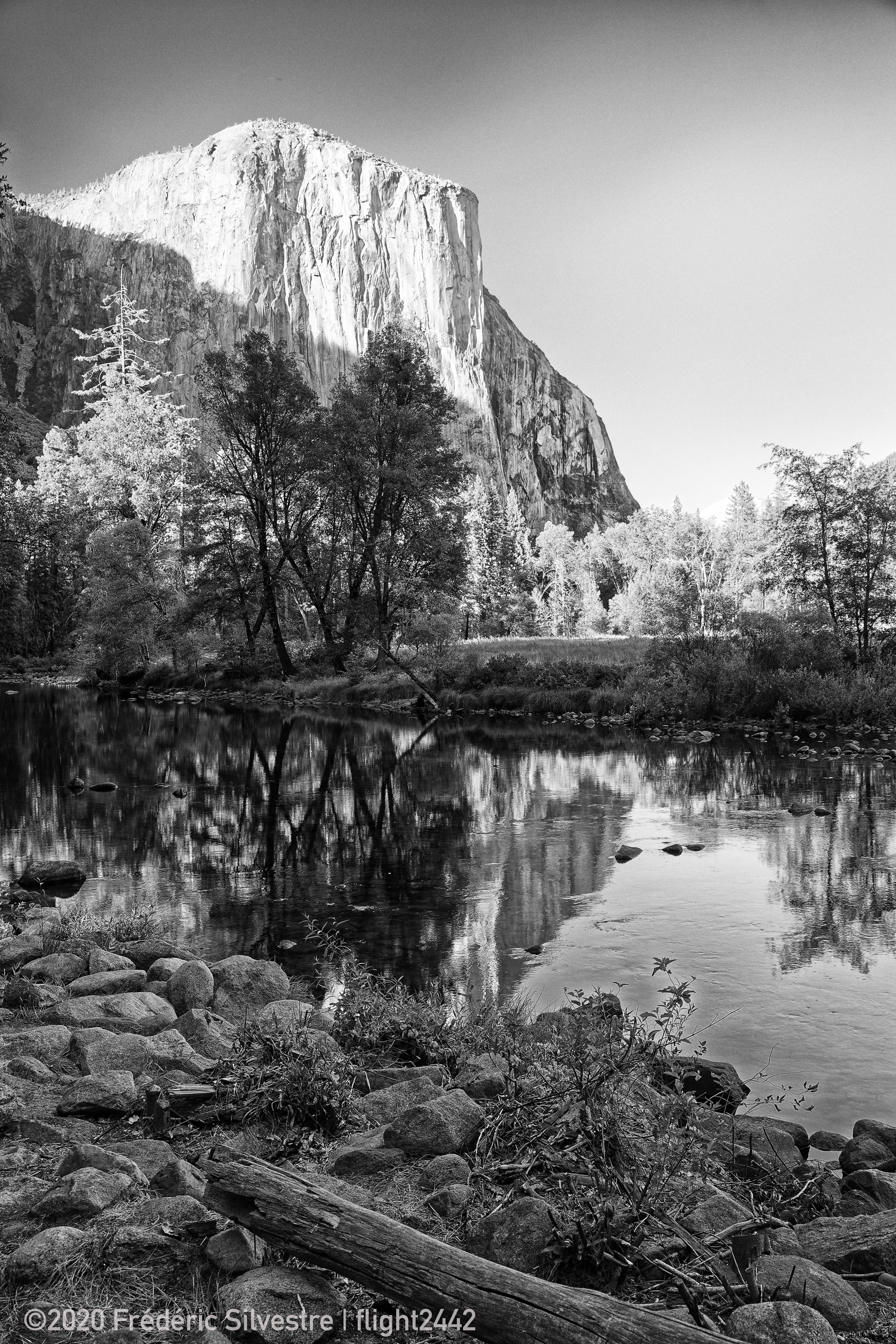
El Capitan from Yosemite Valley view

Tuolumne meadows on Tioga road, Eastern Yosemite
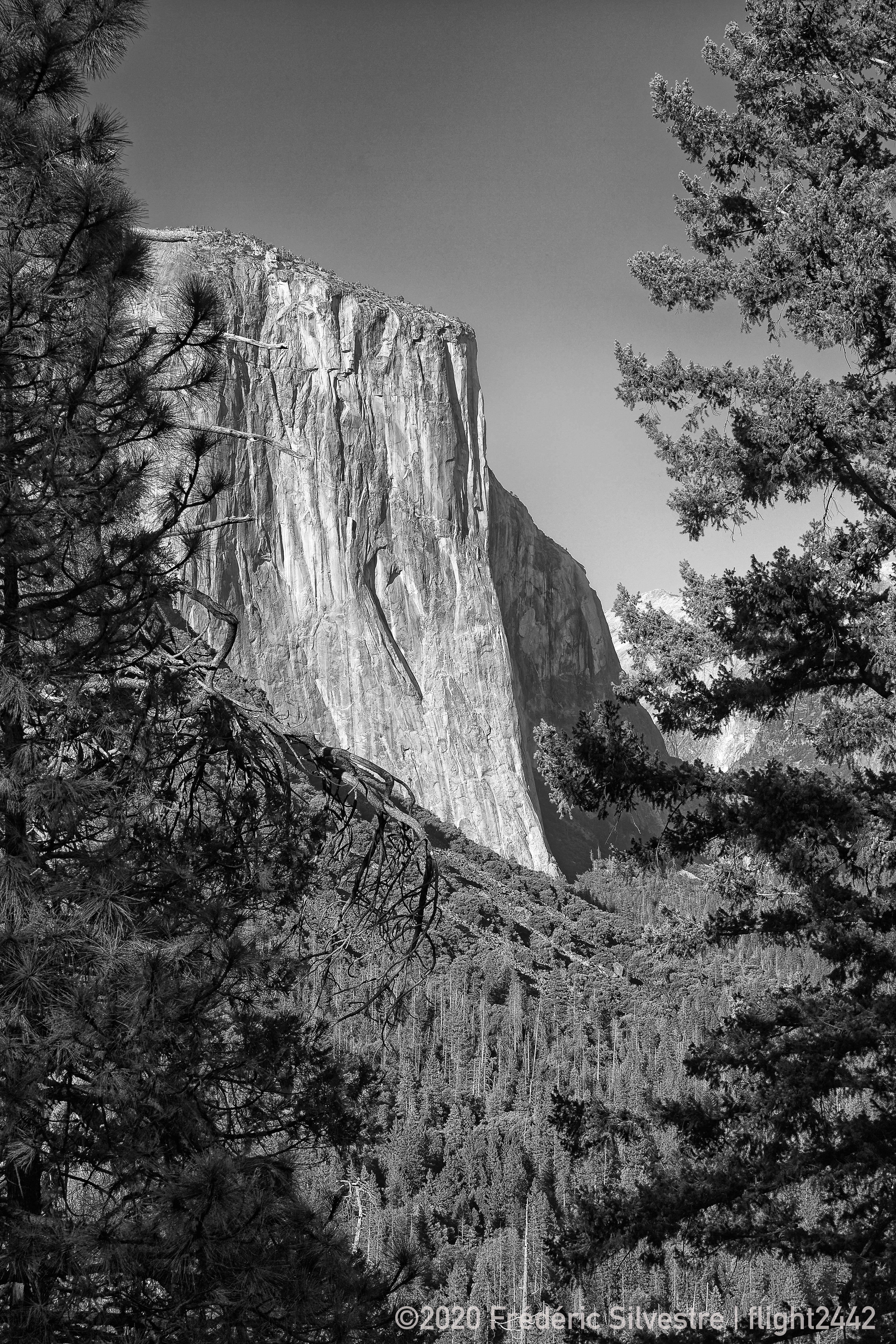
El Capitan

Panoramic view of half dome and Yosemite valley from Glacier point